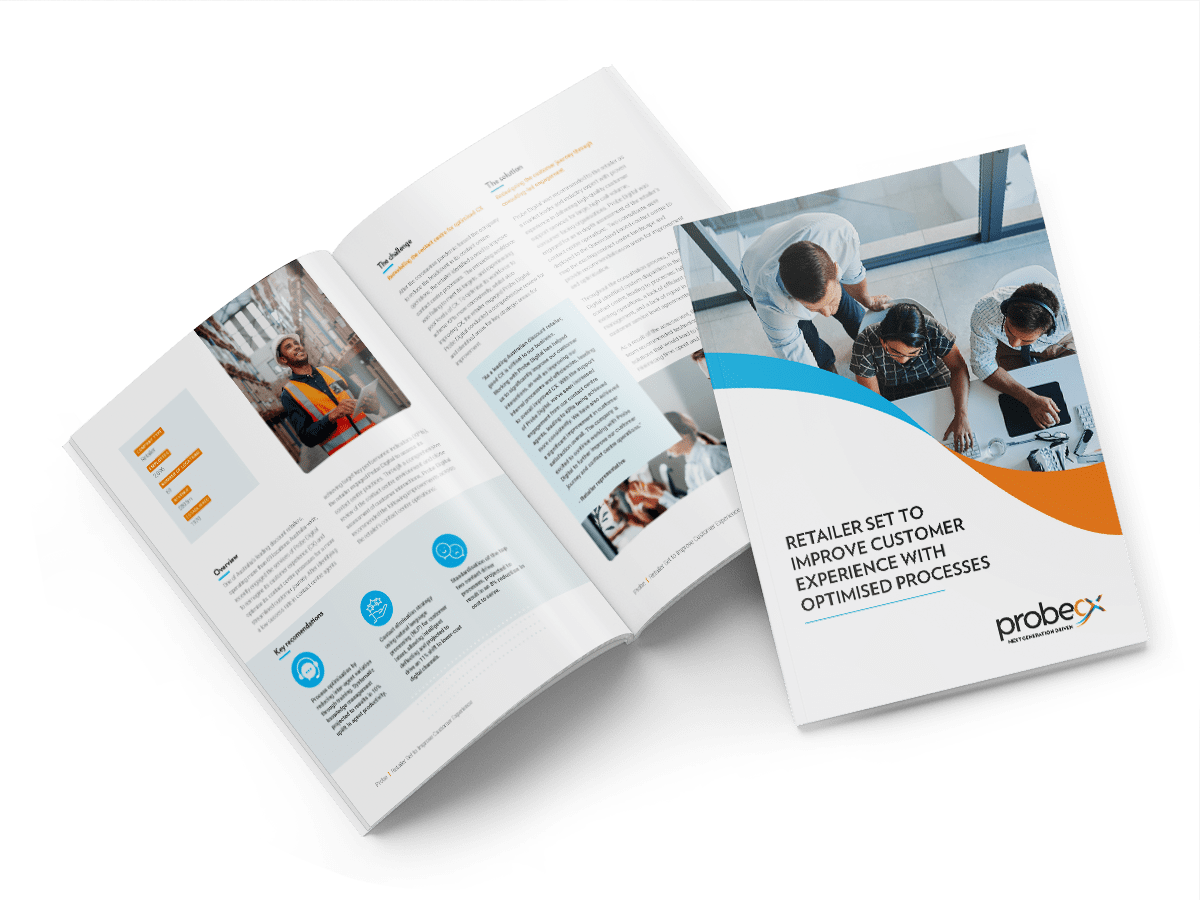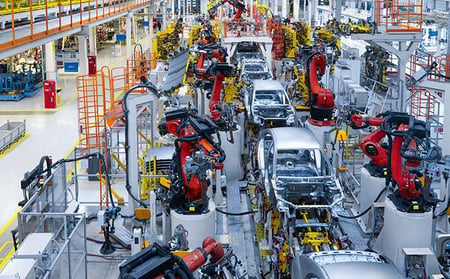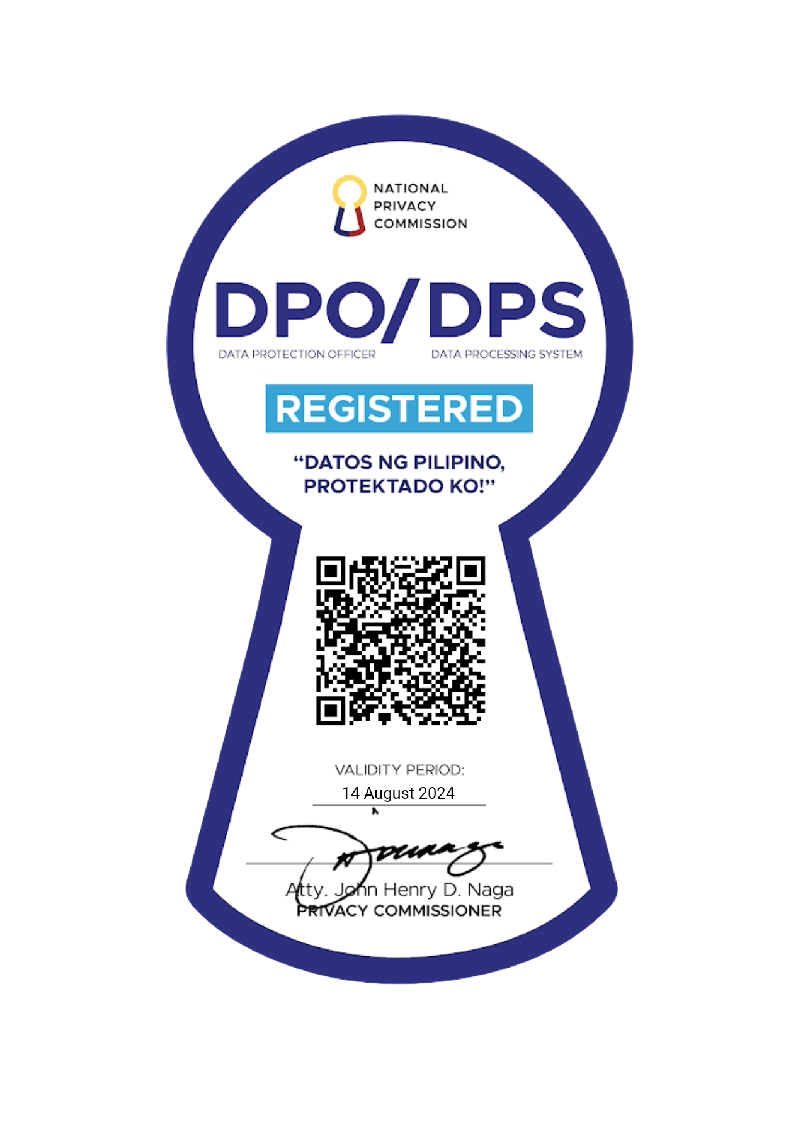-
About Us
Probe CX is a tech-powered, global customer experience organisation that amplifies human capabilities with technological excellence.
-
Vision and Culture
We help our clients become modern digital organisations by combining the latest technology with people, process and data.
-
Executive Team
Meet the team with unmatched experience committed to helping organisations create environments for digitally-enabled CX to thrive.
-
Compliance
Industry-recognised certifications to protect what matters most to our clients and their customers.
-
Locations
Over 19,000 team members delivering exceptional customer experiences across five countries.
-
Reasons to choose Probe CX
The top nine reasons to get more closely acquainted with Probe CX.
TECHNOLOGY & TRANSFORMATION SERVICES
 Creating exceptional customer experiences by 'doing it better'
Creating exceptional customer experiences by 'doing it better'
Optimise your customer experience by designing, deploying and managing digital solutions customised to your unique needs.
Continue reading- Blog
- What are PDD and SDD In RPA?
What are PDD and SDD In RPA?

Befitting an emerging technology though, newcomers to automation will likely find their heads spinning as they come to grips with the nuances and intricacies of developing and deploying RPA. While there are countless facets to be explored, let’s focus on two acronyms that appear regularly in RPA conversations that every business should be aware of given the vital role they play in the journey to automation.
What is PDD and SDD?
In software development, PDD and SDD stand for Product Design Document and Software Design Document, respectively. The PDD outlines the overall vision for a software product, including its features, user interface and functionality. The SDD is a more detailed document that describes how the software will be designed and built, including information on the software architecture, data flow and technical specifications. Together, the PDD and SDD provide a comprehensive roadmap for the development team, helping to ensure that the software product meets the client's requirements and is delivered on time and within budget.
What is PDD in RPA?
PDD stands for process definition document in RPA, which outlines the business process to be developed. Typically prepared by the end-user and/or business analyst, the document is then used by the developer as the basis from which to design automated solutions.
Documenting a process in detail is essential for a successful automation. This means gathering as much information as possible about the task and identifying all the gaps and possibilities of improvement to make it more flexible for RPA. This includes the process flow and sequence of steps for the current manual process (the ‘as-is’ process), along with the potential automated process (the ‘to-be’ process) which may be illustrated as a map or diagram. Key details may include FTE, transaction load, business rules, error handling, risks, dependencies and known and unknown exceptions.
A vital communication tool, the PDD is a highly confidential document due to its sensitive contents and should be shared with business leaders for final approval before being passed to the RPA development team.
What is SDD in RPA?
SDD means the solution design document in RPA. It helps end-users understand how to implement the automated solution and is usually prepared by the developer. They are created for every business process that is automated using RPA and contain high-level design reports that describe the ‘to-be’ process.
The importance of having a quality SDD in any RPA project cannot be understated. The SDD process includes detailing factors such as the architecture design, applications involved in automation, decision logic and exception handling, the developer offers their client the best chance of RPA success. Other items that may be included in an SDD include information security (required compliance observation), debugging tips for potential issues and factors that impact the success of the automation.
Defining how errors and exceptions will be handled and communicated to the user is also critical as it not only improves the stability of the bot but allows insights into scenarios that could otherwise be missed. This is particularly critical for transaction-based processes as an RPA should never be halted due to one single transaction failure. A proper resilience plan should also be established with the business to ensure minimal risk in the event of bot failure or server/software issues. Given the complex nature of creating an SDD, it is also highly recommended to use versioning and track changes to ensure access to previous drafts.
Summary
When it comes to RPA, over-documentation is a blessing rather than a curse. Whether outlining a business process in a PDD or drafting an SDD for a business, the documents are not only essential for the immediate automation of a task but ensuring that access to key information and knowledge about the RPA is available to future developers and users.
With RPA highly valued by sectors such as financial services, health care, retail and human resources, discover the key steps to consider when preparing for your own RPA journey.
Related Articles
Technology
How to get started with intelligent automation
RPA can create growth opportunities and reduce operational costs but it is not a 'one size fits all' concept. Learn more in this blog here.
Technology
8 RPA trends to watch
From hyperautomation to low-code platforms and increased focus on security, learn about the latest developments shaping the world of automation.
Technology
RPA in finance and accounting - a digital transformation
The finance and accounting sector is burdened by repetitive and time-consuming tasks, which is why robotic process automation is ideal...
© Copyright 2024 Probe CX | All Rights Reserved
Privacy Policy | Financial Hardship Policy | Whistleblower Policy | Complaints Procedure | Supplier Code of Conduct | Make a Payment | Client Login






